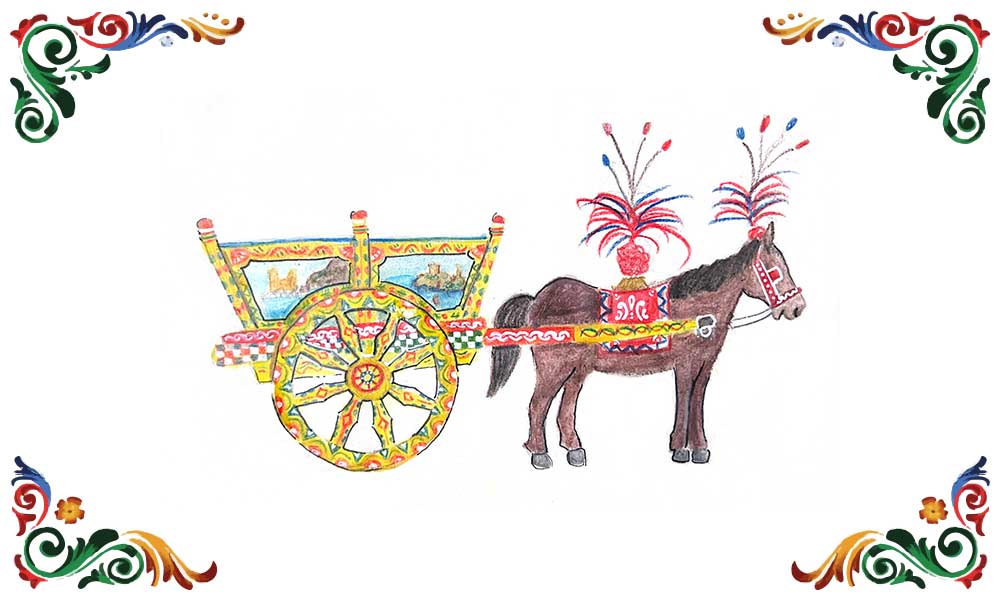
Sicilian cart
It was a means of transportation pulled by horses and it was common in the early 19th century, used to move wood, grain bags, citruses, almonds and wine barrels.
Many workforces were needed in order to build a cart: a carver for the wooden parts, a blacksmith for the wrought iron elements, a ‘carradore’ for the assembly, and a painter to decorate all the surfaces.
The strictly functional elements, such as wheels, were also carved and painted indeed, and even the horses were harnessed in colourful vestments. This because the Sicilian cart was not only a means of transportation but also a means of cultural transmission.
The paintings pictured historical, literary, religious or chivalric episodes.
The tradition of painting the carts had various functions:
- protective: to preserve the wood
- superstitious: the scenes depicted were considered auspicious, able to ward off bad luck;
- advertising: attracting the attention of buyers and affirming the owner’s status symbol and wealth.
Created to fulfil practical needs, the Sicilian cart was a true travelling work of art.



